In the Heart of the Crowd: Photographing Chiang Mai’s Rocket Festival.
- Tatiana Mocchetti
- Jul 7
- 9 min read
Before even arriving, I knew I wanted to do something different. In street photography, we often focus on lone subjects, couples, or trios. But this time, I was drawn to something more challenging and energetic: capturing people in the crowd—not isolated, but intertwined, reacting together, moving together. I wanted to explore the rhythm of collective emotion, and how to visually compose from within that living current.
I spent two full afternoons immersed in the festival, from the vibrant street scenes of Saturday’s small rocket launches to the dramatic tension of Sunday’s giant send-offs at Huai Lai Reservoir. This guide shares everything I learned: the history of the festival, the best photo opportunities, how to navigate the crowd, and how to tell visual stories within the chaos.
Whether you’re reflecting on your experience or planning for next year, the Bamboo Rocket Festival is a one-of-a-kind event that rewards full presence—and a ready camera.
1 • Origins & Cultural Significance
Long before weather apps and irrigation canals, communities across present-day Laos and northern Thailand relied on faith to coax the monsoon. The Lao-Isan ritual of launching gunpowder-packed bamboo tubes—Bun Bang Fai—dates back centuries. Anthropologists link it to pre-Buddhist fertility rites; by "waking" sky deities with noise and smoke, villagers hoped to ensure bountiful rice harvests. Today’s rockets still carry that symbolism, earning merit for the builders and prestige for the village whose projectile flies highest or longest.
Sankamphaeng’s version blends Lanna flair with Isan roots. While I didn’t witness any formal street parade this year, the energy of the event was still deeply felt in the village atmosphere, where teams gathered around their rockets, dressed in matching colors, preparing and celebrating with music and laughter. Competitors spent weeks hand-rolling black-powder charges, carving stabilizing fins, and painting tubes in club colors. Rocket names—from "Little Tiger" to "Rain Dragon"—were stenciled in bold Thai script.
Modern safety rules have nudged the heaviest launches from rice paddies to the open Huai Lai Reservoir, reducing fire risk and giving photographers a clear skyline. Villagers still read omens in each misfire: if the rocket fails, its sponsor crawls along the muddy track to appease spirits, while the crowd roars approval.
For outsiders, understanding this cosmology fosters respect. Approach the festival not as pyrotechnic entertainment, but as a living conversation between earth and sky—one that ends, if all goes well, with rain. On both days of the festival, rain began to fall in the late afternoon!

2 • Photographing Rhythm in Motion
The deeper I moved into the crowd, the more I realized the festival wasn’t defined by individual subjects—it was shaped by its rhythm. Not just the rhythm of the drums or the sequence of rocket launches, but the human rhythm: how people gathered, reacted, scattered, and re-formed around each event.
Photographing in this kind of environment is like dancing with unpredictability. The challenge is not only to find light and composition but to feel the collective pulse—to anticipate where emotions will rise next, and to position yourself right before they do. To do this well, you have to become almost invisible—an observer who doesn’t disturb the current. Blend in. Move quietly. Let the crowd carry you. The best moments come when people forget the camera is there.
3 • Essential Gear for Chaos Photography
Packing for Bun Bang Fai involves balancing flexibility with durability, and I chose my gear very intentionally.
Camera – I used my Canon 90D, a crop-sensor DSLR that’s my one and only camera. I know it inside and out. It's weather-resistant, reliable in unpredictable lighting, and fast enough to keep up with moving subjects in the crowd. Most importantly, it's the tool I trust completely—familiar in my hands and perfectly suited to how I shoot.
Two-Lens Kit – I packed my 18–135 mm kit lens for its versatility. It let me go from wide contextual shots of the crowd and launch area to tighter frames of expressions without changing lenses in the dust. I also brought my 85 mm f/1.8, a lens I love for portraits. It gave me that creamy bokeh and just enough distance to photograph people naturally, without getting too close. Why I Chose This Setup – I wanted to stay mobile without sacrificing creative flexibility. The 18–135 mm allowed me to react instantly to changing scenes, from wide crowd shots to details of rocket construction. The 85 mm helped me maintain respectful distance while capturing raw, emotional portraits with a beautiful depth of field. And my Canon 90D gave me reliability, familiarity, and just enough resolution to crop if I missed a moment in the crowd.
4 • Crowd Storytelling Techniques
Before going, I had a clear idea in mind: to explore how to photograph the crowd. But when I first arrived, like so many times before, I was immediately tempted by the familiar pull of portraiture. I found myself instinctively drawn to single faces in the crowd—those fleeting expressions, that eye contact, the individuality within the mass. It took a conscious effort to step back and resist that impulse, to widen my frame and look at how people moved, gathered, and existed together. That shift in perspective became the real work of this shoot. In street photography, we often capture solitary figures, duos, or groups of three—those classic street compositions. But here, the festival was all about people together, gathered, moving, reacting as one. I wanted to challenge myself to see not just individuals but the energy between them.
Crowds aren’t chaos—they’re layered stories waiting to be told. Look for:
Patterns – Matching t-shirts, umbrellas, hats—find repetition to anchor your composition.
Emotion Groups – Reactions to a launch: some cover ears, others cheer wildly. Shoot several expressions in one frame.
Foreground/Background Balance – Use aperture control to create narrative depth.
Details in Motion – Teams carrying rockets together, men pushing launch carts through the dust, groups erupting in cheers after a successful flight—these shared actions say as much about the spirit of the festival as the rockets themselves.
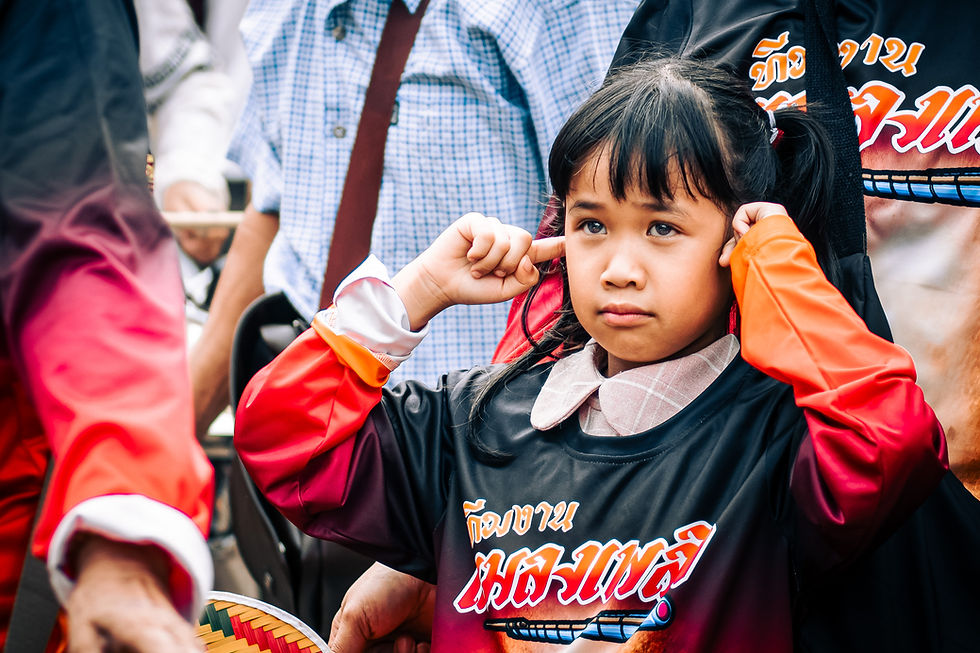
5 • Portraits Among Powder and Rain
The true soul of the festival isn’t in the rockets—it’s in the faces. Villagers are usually proud and generous when asked for a portrait. Approach with respect, learn a few Thai words (khun suay mak = “you’re very beautiful”), and show them the result.
But if you're documenting this festival as a street photographer—or even more so as a storyteller—don’t stop at faces. Use portraits not only to highlight individuals, but to anchor a broader narrative. Who are they within the event? What role do they play—are they launching, preparing, supporting, celebrating? Let your portraits spark curiosity about what surrounds them. A close-up of a rocket builder should lead the viewer to the scene where his creation takes off.. A man lifted onto another’s shoulders above the crowd might symbolize triumph, or the peak of a communal joy—a living statue above the chaos. A portrait can serve as a chapter opener in a larger photo reportage, providing emotional weight and guiding the reader through the unfolding story.
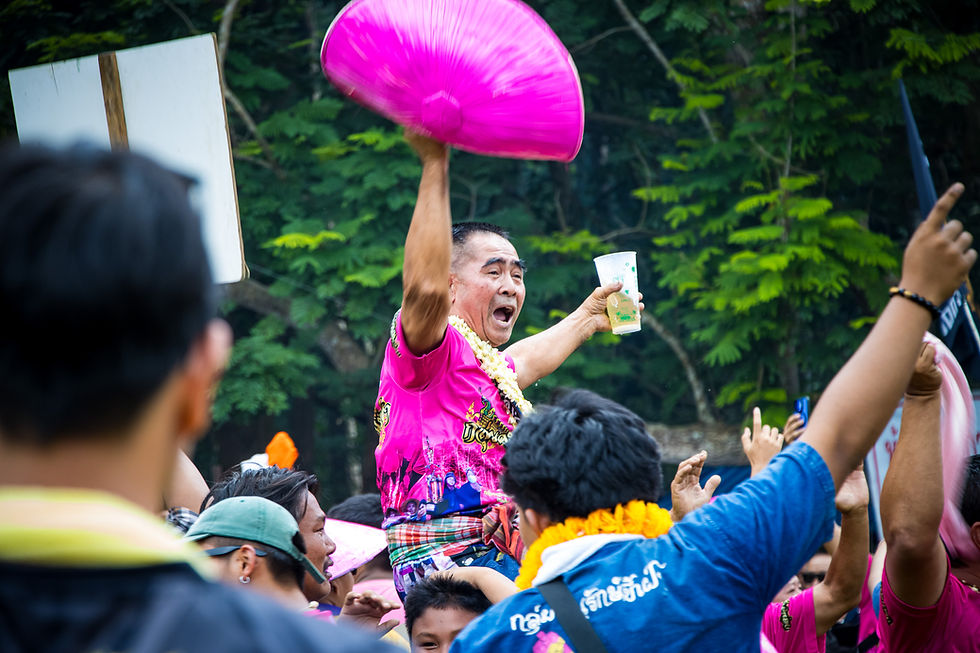
In festivals like this, connection beats composition. Always. But it’s what you do with that connection across a sequence of images that turns portraits into a story.
6 • Immersing Myself Like a Reporter: Two Days of Storytelling and Strategy
Spending two full afternoons at the festival gave me the chance to observe it from multiple angles, both physically and emotionally. I returned to Sankamphaeng on both days—Saturday for the smaller community gatherings and test launches, and Sunday for the large-scale rocket launches at Huai Lai Reservoir.
This time, I approached it like a photo reportage: not just looking for great single shots, but trying to build a visual story of the entire experience. I wanted my camera to capture transitions—preparations, anticipation, release, aftermath. By talking with people, I began to understand more about them—the roles they played, the teams they were part of, and the spirit that fueled their preparations. These conversations helped me capture not just faces, but relationships, rituals, and the energy shared within each group.
Some of my favorite photos came during quiet in-between moments: a rocket artisan wiping sweat from his brow, a child climbing a chair for a better view, a shared laugh between villagers as a rocket misfired. But beyond those quiet moments, I also tried to capture the sheer joy of the event—smiles bursting through clouds of dust, sparkling eyes that mirrored the rockets shooting skyward, and collective expressions of joy as teams celebrated their success together. Being present for two afternoons allowed me to look beyond the spectacle and focus on storytelling rooted in human emotion and shared energy.
Festivals are more than moments—they're narratives unfolding in real time. Photographing one isn't just about capturing highlights; it's about telling a complete story with your lens. Here's how to approach it:
Scout, Don’t Just Shoot
Arrive early. Walk the grounds without your camera raised. Observe. Where are people gathering? What rhythms emerge? Knowing the flow helps you anticipate rather than react.
Choose a Theme
Will your story focus on the tension before launches? The joy of community? The intergenerational transmission of tradition? Defining a loose theme helps you filter what to photograph and what to leave out.
Layer Your Shots
Think like a storyteller: open with establishing shots (the crowd, the setting), follow with medium shots (interactions, preparations), then close in on emotion (portraits, gestures, micro-moments). These layers build visual momentum.
Work the Light
Festivals often span morning to sunset. Use harsh daylight for dramatic contrast and backlit scenes; wait for golden hour for emotion-rich portraits. And don’t fear overcast skies—diffused light can be perfect for subtle storytelling.
Be Present and Respectful
Take the time to talk with people. Ask questions, learn who they are and which team they're part of. These small interactions not only build trust—they reveal deeper stories. A smile, a small bow, or showing them the shot still goes a long way, but engaging in real conversation transforms you from observer to participant.
7 • Quick Takeaways
The Bamboo Rocket Festival is a rare opportunity to photograph raw communal emotion in Chiang Mai.
To shoot well in a crowd, learn to anticipate rhythm and become invisible.
Use versatile gear: a zoom lens for context, a prime for emotional portraits.
Look beyond rockets—portraits, gestures, and shared action carry deep stories.
Rain, pauses, and chaos are not obstacles but visual gifts. Stay present.
Treat your work like a reportage: tell the full arc, not just single moments.
Respect traditions, engage gently, and be part of the energy—not above it.
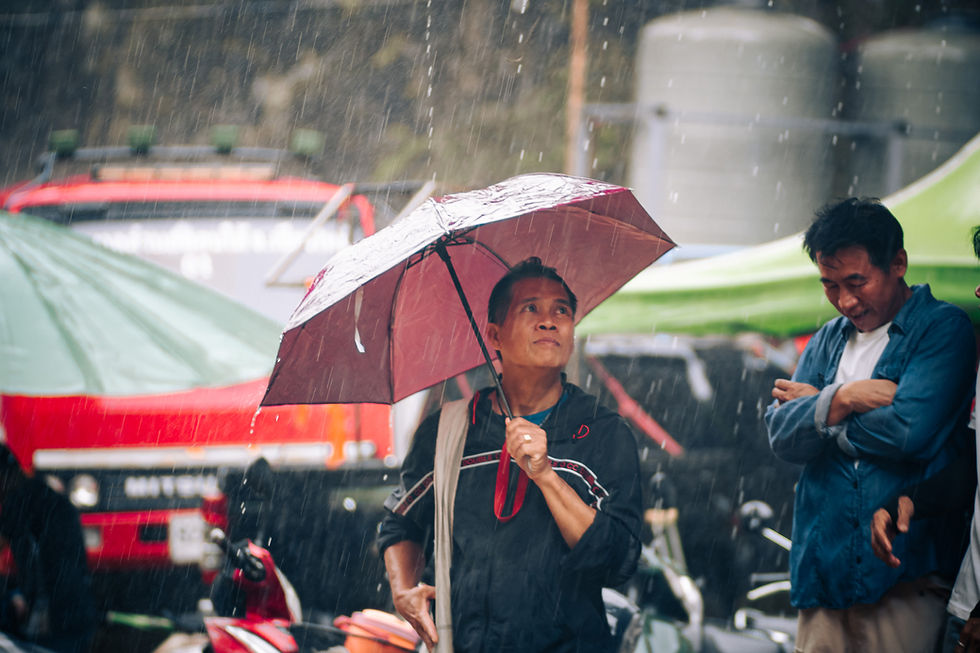
FAQs
1. What camera settings work best for photographing the rocket launches?Use a fast shutter speed (1/1000 or higher) to freeze the motion, paired with continuous autofocus and burst mode. Adjust ISO depending on cloud cover, especially near Huai Lai Reservoir.
2. Where is the best spot to photograph the Chiang Mai Bamboo Rocket Festival?For action shots, position yourself behind or to the side of the launch scaffold. For crowd storytelling, walk through the village lanes early in the day to catch preparations.
3. Can I attend both launch days of Bun Bang Fai in Chiang Mai?Yes, Saturday typically features smaller rockets and local street scenes. Sunday showcases large-scale launches at the reservoir. Both offer unique photographic moments.
4. What lenses are best for crowd photography at festivals like this?A zoom lens (18–135mm) lets you move between wide crowd scenes and tighter portraits. A fast prime lens (like 85mm f/1.8) is great for emotional, shallow-depth portraits within groups. You could also go with a wide-angle or a 24–70mm lens for even more flexibility when working close to subjects in dense crowds.
5. Are there any ethical guidelines to follow while shooting?Always ask permission when framing close-up portraits. Respect rituals and avoid blocking pathways or monks. Learn a few Thai words—this builds trust quickly.
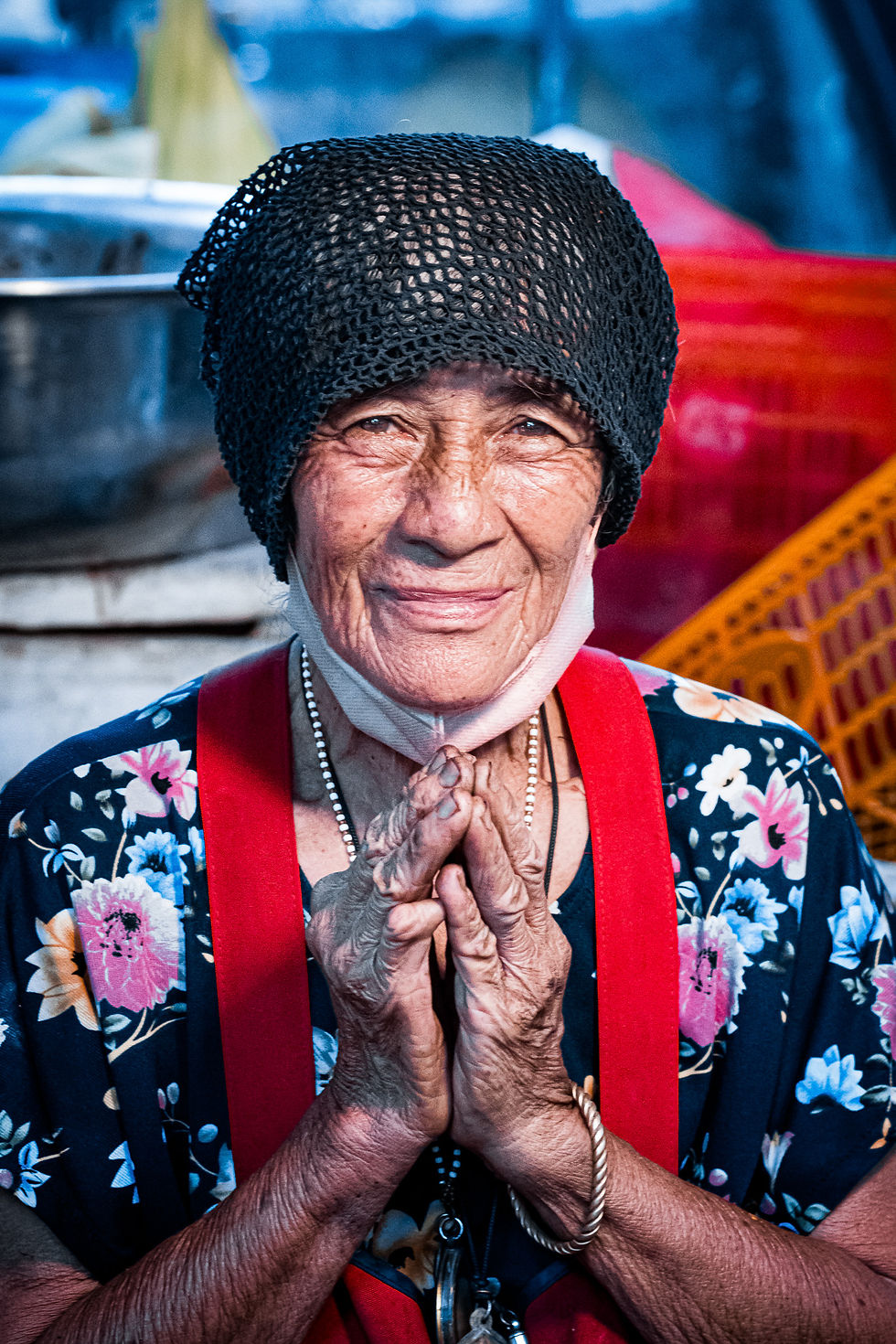
The Chiang Mai Bamboo Rocket Festival is not just about rockets soaring into the sky—it’s about energy soaring through people. As street photographers, we’re trained to look for singular moments, but here, it’s the collective rhythm that tells the richest story. You’ll find it in smiles shared mid-launch, in the tension before ignition, and in the relief when rain begins to fall.
If you go, don’t chase spectacle—chase connection. Learn the timing of the event, the heartbeat of the crowd, and the quiet seconds between chaos. Let your gear serve your instinct, and let instinct serve your story.















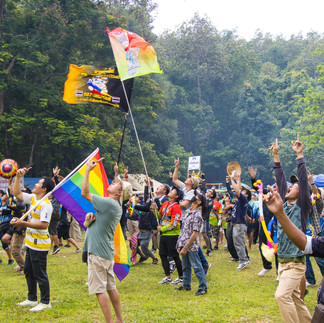







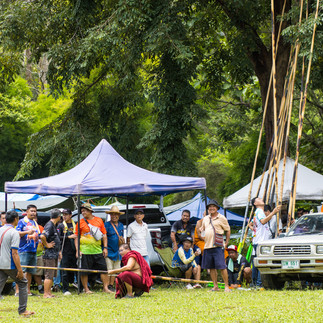


























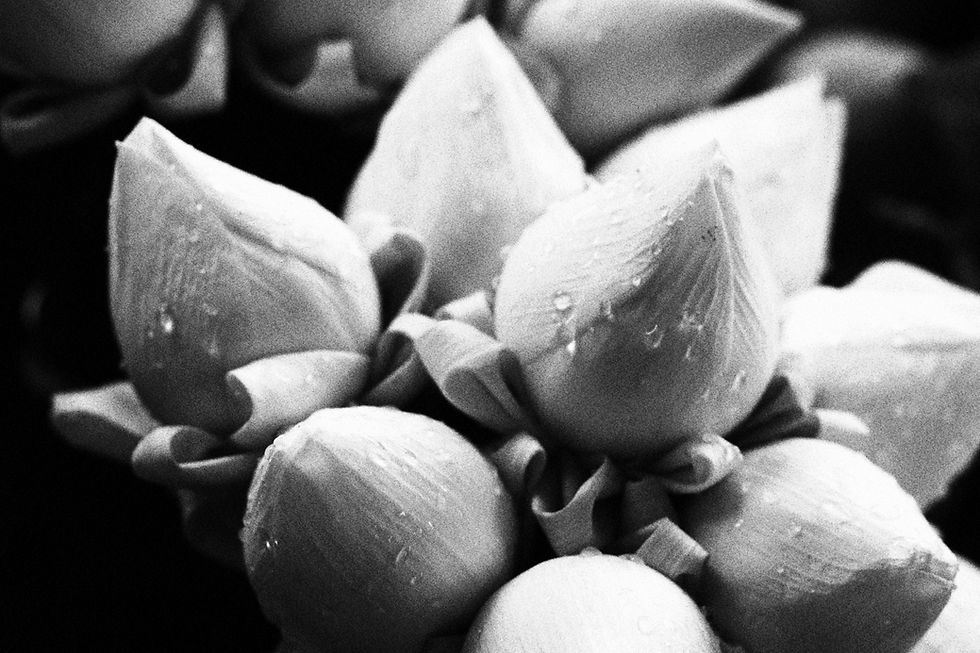


Comments